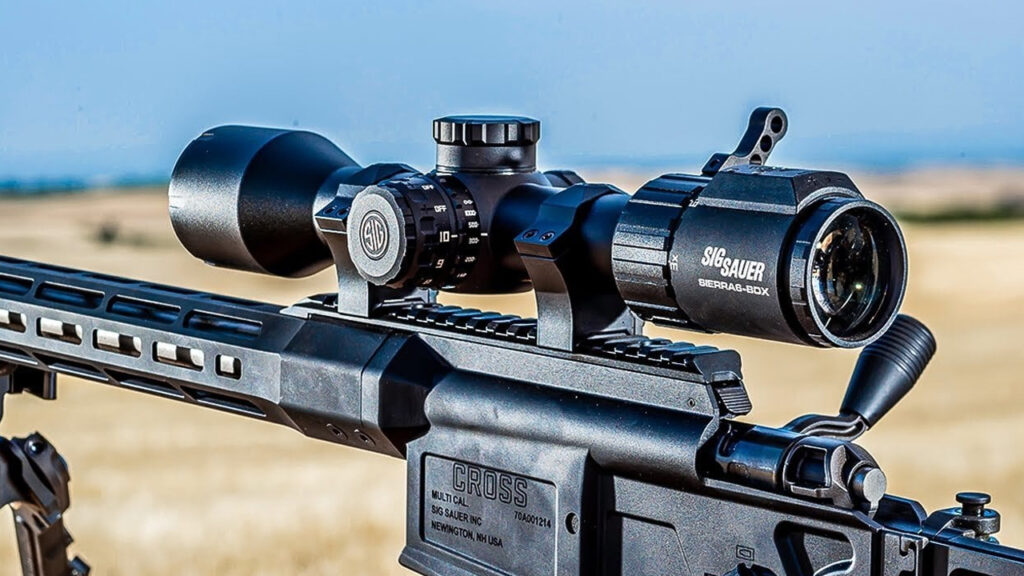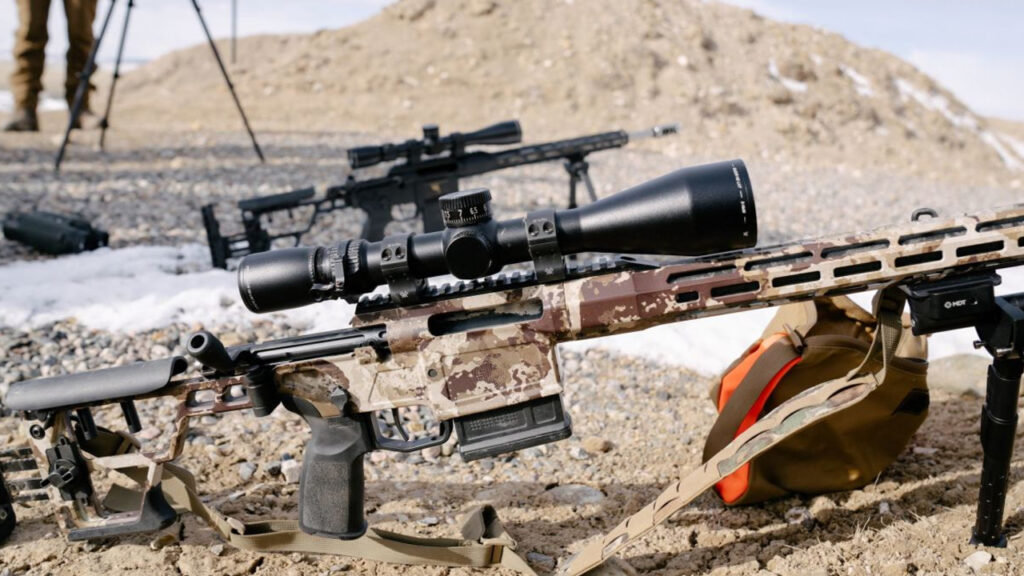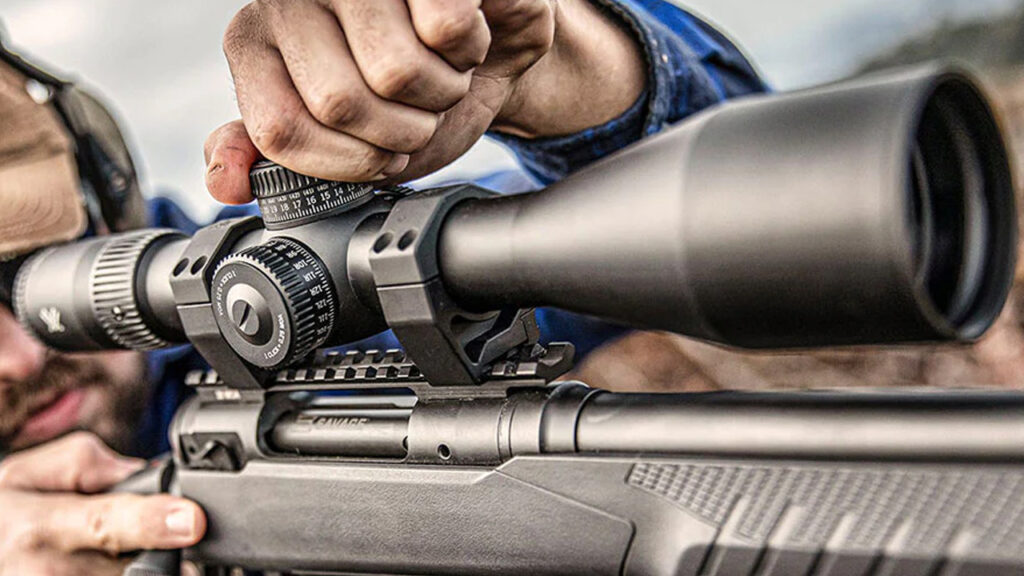Выбор для ставок пин ап казино и знакомство с правилами сайта
Рынок азартных развлечений стремительно растет, запускаются новые клубы, предлагающие огромный ассортимент игр и акций для гемблеров. Каждое заведение хочет выделиться

Rifle scopes are optical devices mounted on rifles to enhance accuracy and precision by magnifying the target. The primary purpose of scopes for rifles is to provide shooters with a clear and magnified view of their target, allowing for better aim and improved shot placement. Choosing the right rifle scope is crucial for achieving desired results, as it directly impacts the shooter’s ability to hit targets effectively. Whether for hunting, competitive shooting, or tactical applications, selecting the appropriate rifle scope ensures optimal performance and maximizes the shooter’s potential for success. With various types, features, and options available, understanding the definition and importance of scopes for rifles provides the foundation for making informed decisions when investing in optics for shooting activities.
Rifle scopes offer a diverse range of options to suit different shooting needs and preferences. Magnification scopes, the most common type, provide varying levels of magnification to zoom in on targets for improved accuracy. Within this category, shooters can choose between variable and fixed magnification scopes, with variable scopes allowing for adjustment of magnification levels and fixed scopes maintaining a consistent magnification power. Additionally, specialized scopes such as night vision and thermal scopes are designed to enhance visibility in low-light conditions, while reticle types like Mil-Dot, BDC, and illuminated reticles offer different aiming aids to assist shooters in acquiring targets with precision. By being aware of the various types of scopes for rifles, shooters can enhance their accuracy and performance on the field by selecting the best optics for their specific shooting application.

When selecting the ideal rifle scope, several critical factors should be taken into account to ensure optimal performance and suitability for your shooting needs. Firstly, consider the magnification range and objective lens size, as these aspects determine the scope’s versatility and ability to provide clear and precise targeting across various distances. Additionally, your reticle preference and functionality play a crucial role, with different reticle styles offering various aiming aids and features to assist shooters in acquiring targets accurately. Durability and construction materials are also essential considerations, ensuring that the rifle scope can withstand recoil, harsh weather conditions, and rugged handling without compromising performance. Finally, budget considerations are significant, as they help determine the scope of options available within your price range while ensuring you get the best value for your investment in scopes for rifles. By carefully evaluating these factors, you can confidently select a rifle scope that meets your requirements and enhances your shooting experience.

Properly mounting and zeroing your rifle scope are essential steps to ensure optimal accuracy and precision in shooting. When mounting your scope, follow the proper procedures to securely attach it to your rifle, ensuring stability and alignment for consistent performance. Zeroing techniques are then employed to adjust the scope’s reticle to coincide with the point of impact of your rifle’s bullets, allowing for precise targeting at specific distances. This process involves firing a series of shots and making incremental adjustments to windage and elevation settings until the reticle aligns perfectly with the bullet impacts on the target. Adjusting windage controls the horizontal alignment of the reticle, while elevation adjustments control the vertical alignment, enabling shooters to compensate for bullet drop and wind drift. By mastering these techniques, shooters can effectively zero their rifle scopes and achieve accurate and reliable shot placement in various shooting conditions.
Proper maintenance and care are crucial for ensuring the longevity and optimal performance of scopes for guns. Regular cleaning and storage practices help prevent the buildup of dirt, debris, and moisture, which can compromise the clarity and functionality of the optics. Routine maintenance checks, such as inspecting for any signs of damage or wear, allow shooters to address potential issues promptly and prevent further damage to the rifle scope. Additionally, protecting against environmental factors like moisture and dust is essential, as exposure to these elements can corrode optics and affect their performance over time. By implementing these maintenance practices, shooters can prolong the lifespan of their rifle scopes and maintain their accuracy and reliability for years to come.
Advanced features and technologies have revolutionized the capabilities of rifle scopes, enhancing shooters’ effectiveness in various conditions. Night vision and thermal imaging capabilities allow shooters to maintain visibility in low-light environments, extending their hunting or tactical capabilities beyond daylight hours. Electronic reticles and ballistic calculators provide shooters with precise aiming points and trajectory calculations, increasing accuracy and shot placement consistency. Moreover, integrating scopes for guns with rangefinders and other accessories further enhances shooters’ capabilities, allowing for quick and accurate target acquisition and engagement. These advanced features and technologies represent significant advancements in rifle scope design, providing shooters with the tools they need to excel in their shooting pursuits, whether for hunting, competition, or tactical applications.
Mastering the practical aspects of using scopes for rifles is essential for shooters to maximize their effectiveness on the field. Understanding shooting fundamentals with scopes for guns, such as proper eye relief, sight alignment, and trigger control, lays the foundation for accurate and consistent shot placement. Additionally, shooters must learn to adjust for different shooting distances by utilizing the scope’s magnification and elevation adjustments to compensate for bullet drop and wind drift. Furthermore, adapting to varying lighting conditions is crucial, as it can significantly impact visibility and target acquisition. By practicing these practical tips and techniques, shooters can confidently utilize scopes for rifles to enhance their shooting skills and achieve success in various shooting environments and scenarios.

In conclusion, rifle scopes play a pivotal role in enhancing accuracy and precision for shooters across various applications. These optics provide crucial magnification and aiming aids that enable shooters to acquire targets with confidence and consistency, ultimately improving their performance on the field. As you navigate the world of scopes for rifles, we encourage you to explore different options and consider your shooting needs to find the best optic for your requirements. Whether for hunting, competitive shooting, or tactical operations, selecting the right rifle scope can make all the difference in achieving your shooting goals. Visit our website, Advanced Combat, to explore a wide range of high-quality scopes for rifles and accessories tailored to meet your specific needs and preferences.
Рынок азартных развлечений стремительно растет, запускаются новые клубы, предлагающие огромный ассортимент игр и акций для гемблеров. Каждое заведение хочет выделиться
Bitcoin Casino Free Spins ֍ Play Btc Which have Totally free Revolves For Register Articles Clean Casino Best Bitcoin Gambling